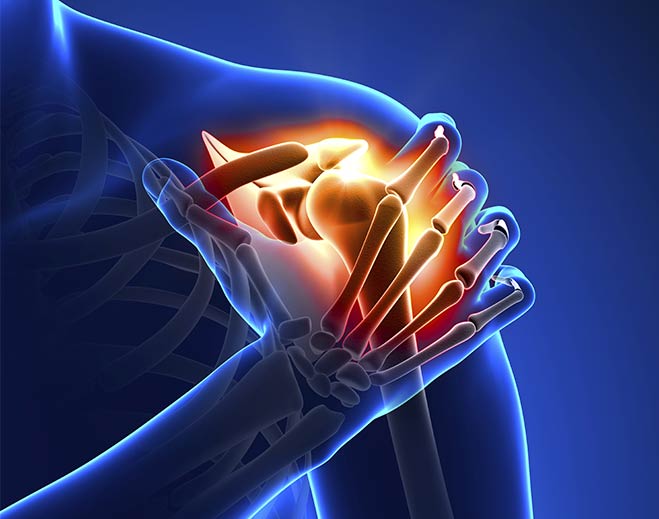Arthritis Treatment
Arthritic joints are swollen, or inflamed, usually because the smooth cartilage around them has been damaged in some way. Patients with arthritis suffer pain, stiffness and swelling in the affected area(s). Nearly one in three adults suffers from arthritis
or other chronic joint symptoms. Arthritis is the most common chronic ailment among the elderly, although it can affect people of any age, including children.
Arthritis Surgery
Although there are many treatment options available to relieve arthritis pain, some people are so severely affected by this condition that their pain is unresponsive to conservative methods. Long-term, disabling arthritis pain may benefit from joint surgery
to reduce pain and restore normal functioning. Joint surgery is typically used as a last resort treatment for arthritis. Joint surgery depends on the location and severity of the pain. Hip and knee surgeries are most common, but some procedures can
also be used for the ankles, wrists, fingers and thumbs. Many of these procedures are minimally invasive as new technology helps to provide less scarring and shorter recovery times.
Arthroscopic Surgery
Arthroscopic Surgery is a minimally invasive procedure that allows a surgeon to diagnose and treat joint injuries and disease through small incisions in the skin. A camera the size of a pencil eraser is inserted through these portals into the joint. The
joint is distended with fluid to help see the inside of the joint. Potentially treatable injuries include rotator cuff tendon tears, ACL tears, shoulder labrum tears, bone spurs and bursitis, and, torn cartilage or ligaments.
Fracture Care
Stress fractures are overuse injuries in which small cracks or breaks form in a bone. They occur when muscles lose their ability to absorb shocks. The excess energy then transfers to the bone, which cracks under the pressure. As one of the body’s
most weight-bearing bones, the tibia (shin bone) is highly susceptible.
Sports Medicine
Sports Medicine is a sub-specialty of orthopedics that focuses on the prevention, diagnosis, treatment, and rehabilitation of injuries suffered during activity. A common misconception is that only athletes sustain sports medicine injuries. These injuries
involve tendons, ligaments, cartilage, or bone, and can occur from trauma, or repetitive use. The goal of treatment is to heal and rehabilitate the injury so patients can return to their favorite activities quickly, whether it’s Little League,
recreational play, or a high school, college or professional sport. As with a sports team, there are many professionals who work together to help the patient regain maximum use of the injured limb or joint. “Players” on the team are typically
the primary care physician, orthopedic surgeon, rehabilitation specialist, athletic trainer, physical therapist, – and the patient him/herself. Common injuries treated include:
- ACL Tears
- Compartment Syndrome
- Fractures
- Heat Exhaustion
- Muscle Contusions (Bruise)
- Muscle Cramps
- Shin Splints
- Sprains & Strains
- Stress Fractures
- Torn Tendons & Ligaments
Osteoarthritis Treatment
Osteoarthritis, also known as wear-and-tear or degenerative arthritis, is the most common form of the disease, affecting millions of people in the US each year. This condition is most common in older patients whose cartilage has worn down over time, and
in athletes who have worn down their cartilage from overuse and repetitive motions. Patients with osteoarthritis may experience pain, swelling and stiffness within the joint, which tend to worsen as the condition progresses. Your doctor can diagnose
this condition after evaluating your symptoms and performing an X-ray examination of the affected joint. Treatment for osteoarthritis initially focuses on relieving pain and other symptoms, and may include rest, activity modification, physical therapy,
bracing, nutrition, injection therapy, and anti-inflammatory medication. More severe cases of osteoarthritis may require joint replacement surgery, which removes the arthritis and resurfaces the arthritic joint.
Rehabilitation
Orthopaedic physical therapy involves the rehabilitation of an injured bone, muscle, tendon, ligament, joint or limb. The injury may have been acute (the result of one incident) or chronic (long-term). The patient will usually begin a course of physical
therapy after a short period of rest. Physical therapy can be used to treat and rehabilitate an acute injury, or may also be used to rehabilitate a surgical procedure. Rehabilitation programs are tailored to each patient with the goals of relieving
pain and restoring maximum function to the injured area. Stretching and strengthening exercises are critical. Improvement is sought in strength, flexibility, mobility, coordination, posture, balance, gait, cardiopulmonary health, and pain. Treatment
modalities may include massage, whirlpools, ultrasound, electrical stimulation, heat and cold applications, or alternative therapies. For athletes, rehabilitation typically involves a dual fitness program of weights and cardiovascular training.







